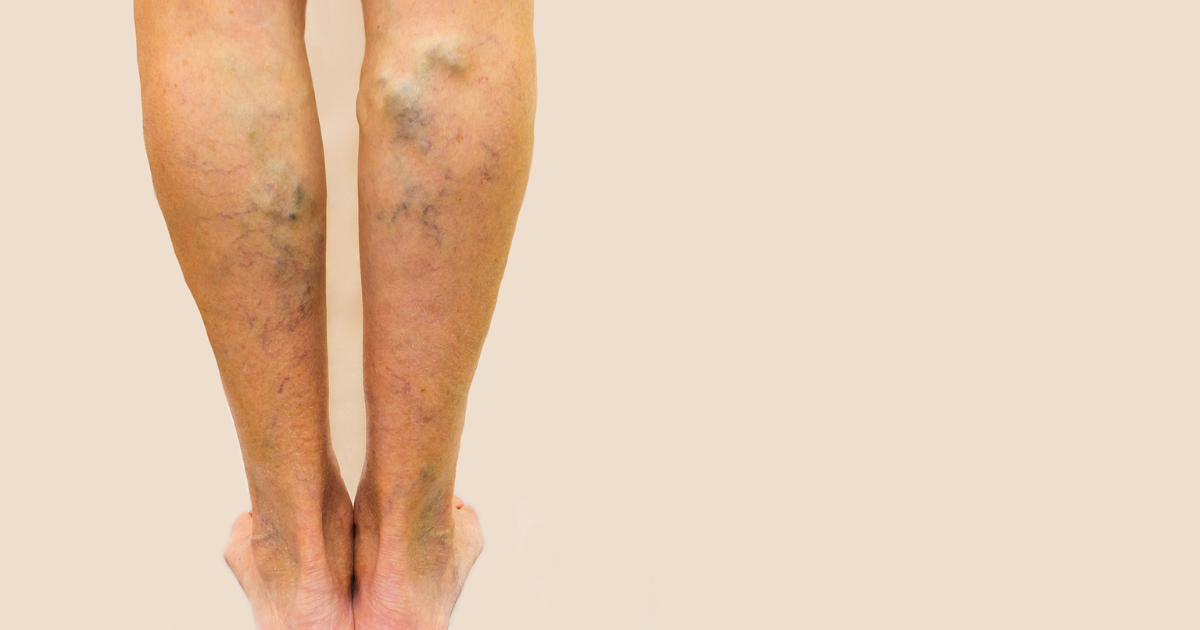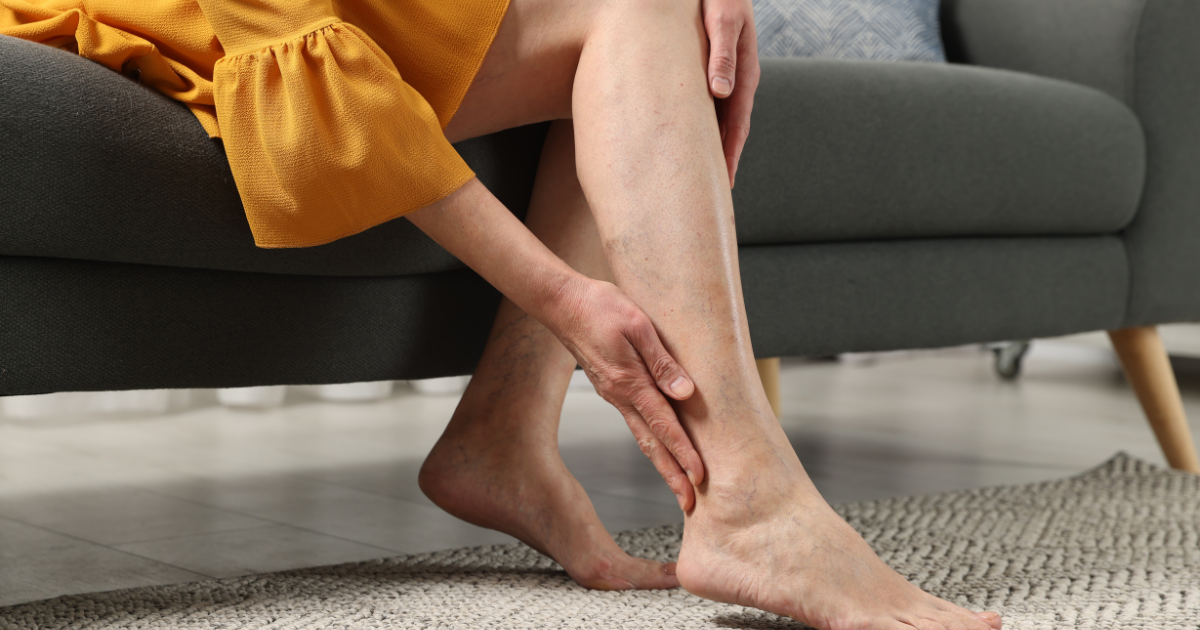Reticular Veins: Causes, Symptoms, and Treatment Options
December 22, 2023Introduction to Reticular Veins
Reticular veins, often referred to as “feeder veins” or “blue veins,” are a common vascular concern for many individuals worldwide. These veins, typically blue-green in colour appearance, lie just beneath the skin’s surface and serve as a bridge between the larger varicose veins and the smaller spider veins. While they might not be as prominent as varicose veins, their presence can still be a cosmetic concern and, in some cases, indicate underlying vascular issues.
Understanding reticular veins is essential not just for those who have them but also for anyone keen on maintaining optimal vascular health. This article aims to provide a comprehensive overview of reticular veins, delving deep into their causes, symptoms, and the latest treatment options available. Whether you’re a patient seeking answers or simply curious about this vascular phenomenon, we invite you to explore this guide, crafted with a blend of medical professionalism and a touch of friendliness.

What Are Reticular Veins?
Reticular veins, deriving their name from the Latin word “reticulum” meaning “net,” are dilated veins that form a network-like pattern beneath the skin. Measuring between 1 to 3 mm in diameter, they are larger than the fine spider veins but smaller than the more prominent varicose veins. Their blue-green hue is a result of their depth in the skin and the deoxygenated blood they carry. They can cause discomfort mentally and physically, too.
Unlike spider veins, which are mostly a cosmetic concern, reticular veins can sometimes be symptomatic, causing discomfort or itching. They are often found on the thighs, calves, and ankles but can appear anywhere on the body. This nature of this condition makes reticular veins a main health concern for its owner.
It’s crucial to differentiate reticular veins from other vein types, as their treatment and implications can vary. While spider veins are superficial and primarily a cosmetic issue, varicose veins are larger, bulging veins that can lead to more severe health complications if untreated. Reticular veins sit between these two in terms of size, appearance, and potential health implications.
Understanding the nature and characteristics of reticular veins is the first step in addressing any related concerns. Recognizing them early and seeking appropriate medical advice can pave the way for effective management and treatment.
Causes of Reticular Veins
Reticular veins can be attributed to a variety of factors. Understanding these causes can help in both prevention and management – both in appearance and pain. Here are the primary contributors:
a. Genetic Factors
A family history of reticular veins or other venous disorders can increase an individual’s likelihood of developing them. If your parents or grandparents had reticular veins, you might be more predisposed to experience them as well.
b. Lifestyle Factors
Prolonged standing or sitting, especially in professions that demand it, can exert pressure on the legs, leading to the development of reticular veins. Additionally, factors like obesity, lack of physical activity, and wearing tight clothing can also contribute.
c. Hormonal Changes
Hormonal fluctuations during pregnancy, menstruation, or due to birth control pills can lead to the dilation of veins, including the reticular ones.
d. Medical Conditions
Certain conditions, such as a history of blood clots or injuries to the legs, can increase the risk of reticular veins. Chronic venous insufficiency, where the leg veins don’t allow blood to flow back to the heart, can also be a contributing factor.
In understanding the causes of reticular veins, one can take proactive steps to minimize risk factors. However, it’s essential to remember that while some causes can be controlled, others, like genetics, are inherent and beyond one’s control. Regular check-ups and consultations with a vascular specialist can provide personalized insights and preventive measures.

Common Symptoms of Reticular Veins
While reticular veins are often identified by their distinct appearance, they can also present with a range of symptoms. Recognizing these signs early can aid in timely intervention and management. Here’s what to look out for:
a. Physical Appearance
The most noticeable symptom is the blue-green network of veins visible just beneath the skin. These veins are flat, unlike the bulging varicose veins, and form a web-like pattern, often spanning a few centimeters in diameter.
b. Discomfort or Pain
Some individuals with reticular veins experience a mild to moderate aching sensation, especially after prolonged standing or sitting. This discomfort can be accompanied by a feeling of heaviness in the legs.
c. Itching
An itching sensation around the vein area is not uncommon. This can sometimes be mistaken for dry skin but persists despite moisturizing.
d. Potential Complications
If left untreated, reticular veins can lead to complications such as the development of spider veins, skin discoloration, or even venous ulcers in severe cases.
It’s essential to note that while many people might have reticular veins without any symptoms, any discomfort or changes in appearance should prompt a consultation with a healthcare professional. Early detection and treatment can prevent potential complications and improve overall vascular health.
Modern Treatment Options for Reticular Veins
The medical field has made significant advancements in the treatment of reticular veins, offering patients a range of effective options to address both the cosmetic and symptomatic concerns associated with these veins. Here’s a closer look at the modern treatments available:
a. Sclerotherapy
Sclerotherapy is a popular treatment where a saline solution or a specialized sclerosing agent is injected directly into the reticular vein. This causes the vein to collapse and eventually fade away. The procedure is quick, minimally invasive, and has a high success rate.
b. Laser Treatments
Laser therapy involves directing concentrated light energy onto the reticular veins, causing them to break down and be reabsorbed by the body. This non-invasive treatment is especially suitable for smaller veins and offers the advantage of no downtime.
c. Endovenous Techniques
Endovenous methods, like endovenous laser treatment (EVLT), use laser energy or radiofrequency to treat larger reticular veins from within. A small catheter is inserted into the vein, and heat is applied, causing the vein to close off and eventually disappear.
d. Benefits and Potential Side Effects
While these treatments are highly effective, it’s essential to be aware of their benefits and potential side effects. Most patients experience significant relief and cosmetic improvement. However, potential side effects can include temporary bruising, swelling, or skin discoloration. It’s crucial to discuss these with a vascular specialist to make an informed decision.
Choosing the right treatment depends on the severity of the reticular veins, their location, and individual patient preferences. A consultation with a vascular specialist will provide a comprehensive evaluation and personalized treatment plan tailored to the patient’s needs.

Managing and Preventing Reticular Veins
While treatments can effectively address existing reticular veins, it’s equally crucial to understand how to manage and prevent them from developing or reoccurring. Here are some strategies and tips to consider:
- Lifestyle Changes
- Maintain a Healthy Weight
- Avoid Tight Clothing
- Stay Hydrated
- Limit Sun Exposure
Below you can read a more detailed list:
a. Lifestyle Changes
Incorporating regular physical activity, such as walking or swimming, can improve blood circulation and reduce the risk of vein issues. Elevating the legs when resting, avoiding prolonged standing or sitting, and wearing compression stockings can also help in managing and preventing reticular veins.
b. Maintain a Healthy Weight
Excess weight can put added pressure on the veins, increasing the risk of venous problems. Adopting a balanced diet and regular exercise regimen can help in weight management.
c. Avoid Tight Clothing
Wearing tight clothing, especially around the waist and thighs, can restrict blood flow. Opt for loose-fitting garments to allow for better circulation.
d. Stay Hydrated
Drinking adequate water supports overall vascular health and ensures smooth blood flow, reducing the risk of vein issues.
e. Limit Sun Exposure
Excessive sun exposure can weaken the skin and the superficial veins beneath it. Using sunscreen and protective clothing can help prevent reticular veins, especially on the face.
Incorporating these preventive measures, along with regular check-ups, can go a long way in ensuring optimal vascular health. Remember, while genetics play a role in the development of reticular veins, lifestyle choices can significantly influence their onset and severity.
Frequently Asked Questions About Reticular Veins
Reticular veins, given their common occurrence, often lead to a plethora of questions from concerned individuals. Addressing these queries can provide clarity and dispel myths. Here are some frequently asked questions and their answers:
a. Are reticular veins the same as spider veins?
No, reticular veins are larger than spider veins and serve as the ‘feeder’ veins to the latter. While both are superficial veins, reticular veins are blue-green and deeper compared to the red or blue spider veins.
b. Do reticular veins indicate a serious health issue?
While reticular veins are primarily a cosmetic concern, they can sometimes be symptomatic. It’s essential to consult a vascular specialist if you notice any discomfort or changes in their appearance.
c. Can reticular veins turn into varicose veins?
Reticular veins themselves don’t turn into varicose veins. However, they can be associated with underlying venous insufficiency, which can lead to varicose veins.
d. Is it necessary to treat reticular veins?
Treatment is often sought for cosmetic reasons or if the veins cause discomfort. If you’re concerned about their appearance or experience symptoms, it’s advisable to seek a professional opinion.
Understanding reticular veins and having accurate information is crucial. If you have further questions or concerns, always consult with a healthcare professional to get personalized advice and insights.
Conclusion
Reticular veins, with their distinct blue-green appearance, are more than just a cosmetic concern for many. Their presence serves as a reminder of the intricate vascular system beneath our skin and the importance of maintaining its health. While treatments have evolved to offer effective solutions for those seeking relief, prevention remains a cornerstone in managing these veins. Simple lifestyle changes, awareness, and regular consultations can make a significant difference in one’s vascular health journey.
As we conclude this comprehensive guide on reticular veins, we encourage readers to prioritize their vascular health. Whether you’re seeking treatment, looking for preventive measures, or simply aiming to understand more, remember that early detection and intervention are key. Always consult with a vascular specialist to ensure you’re on the right path to optimal vascular well-being.
